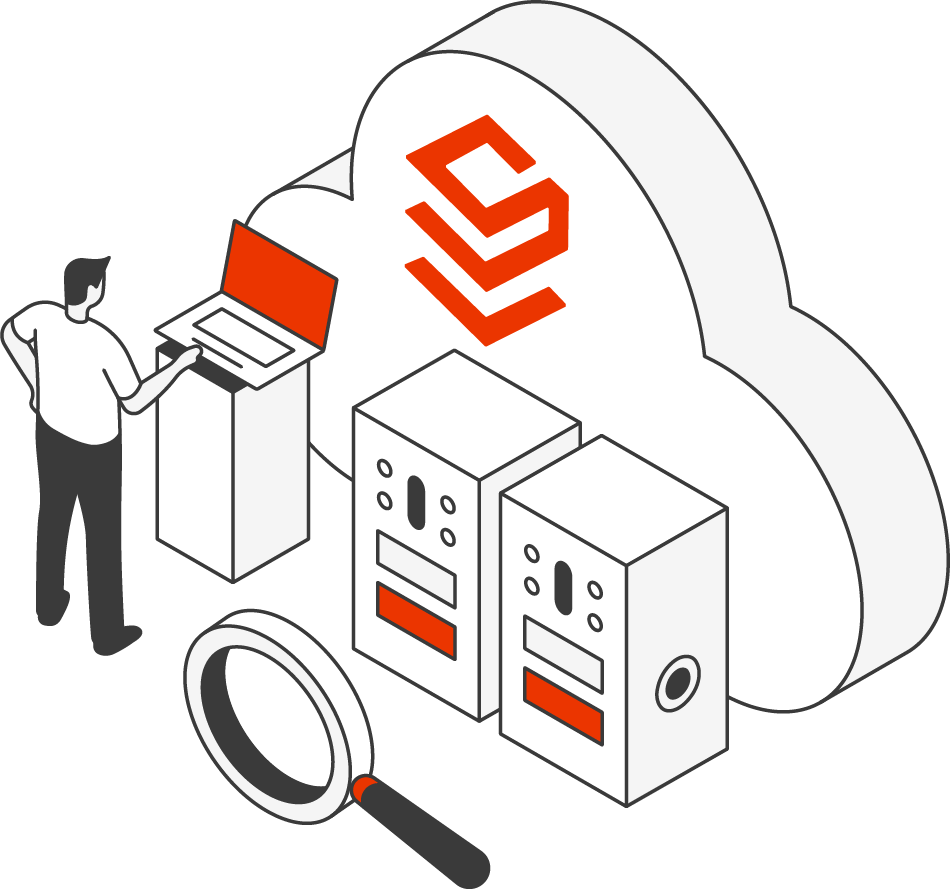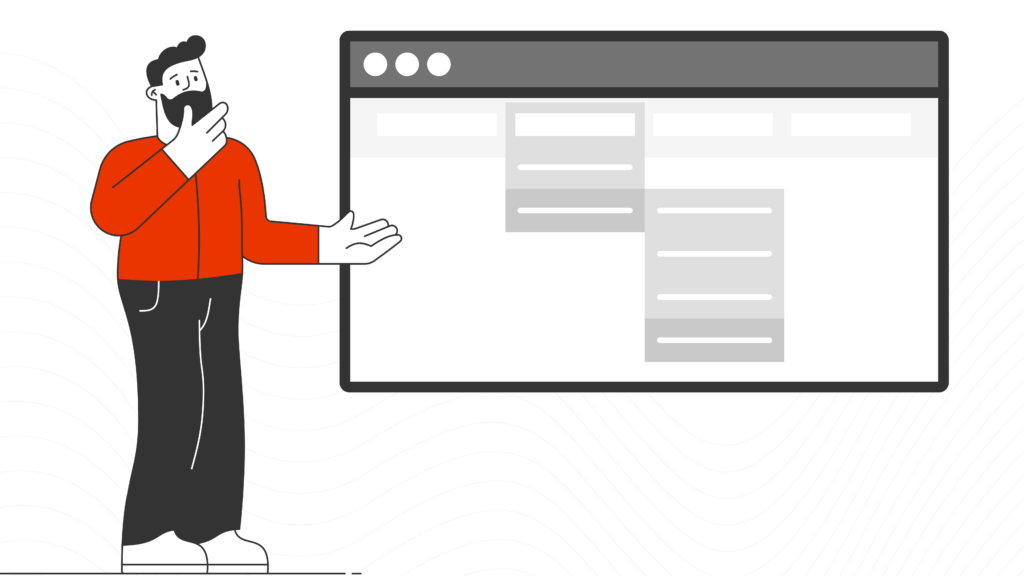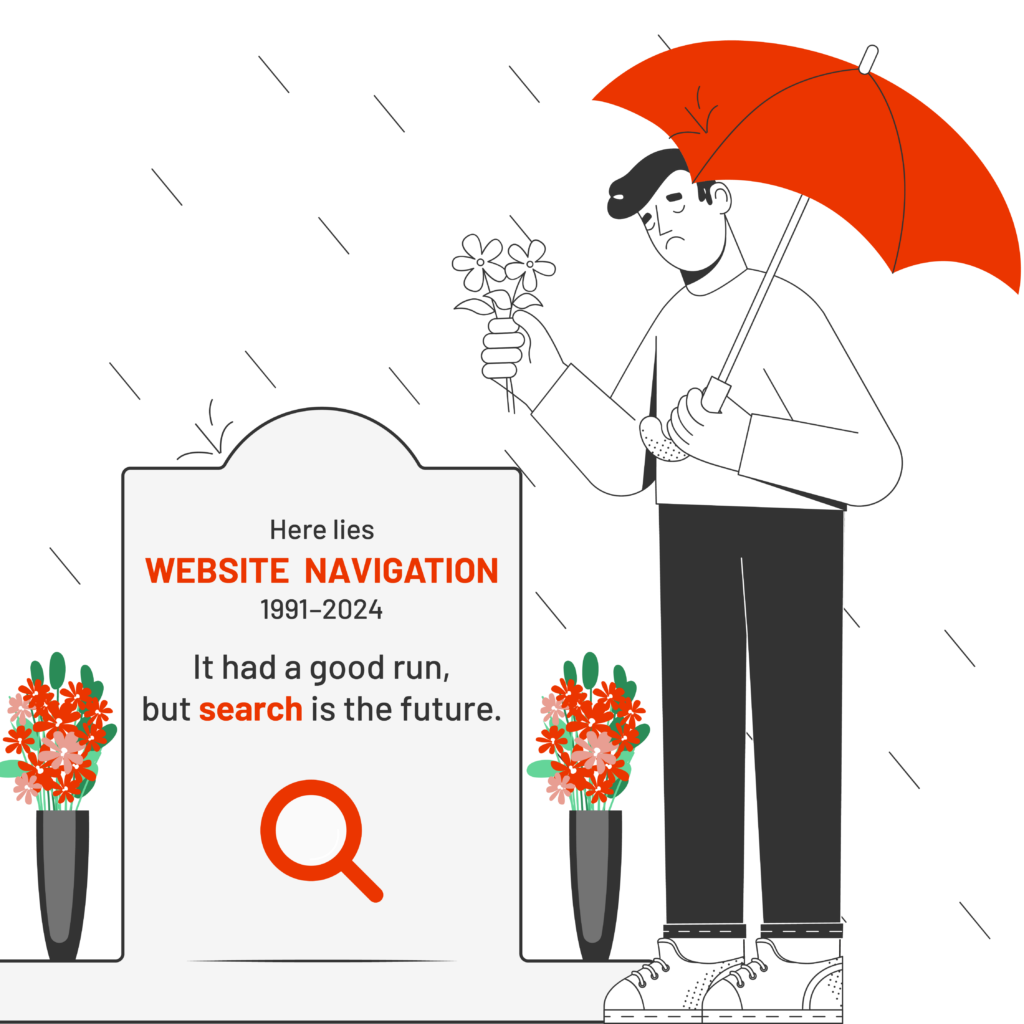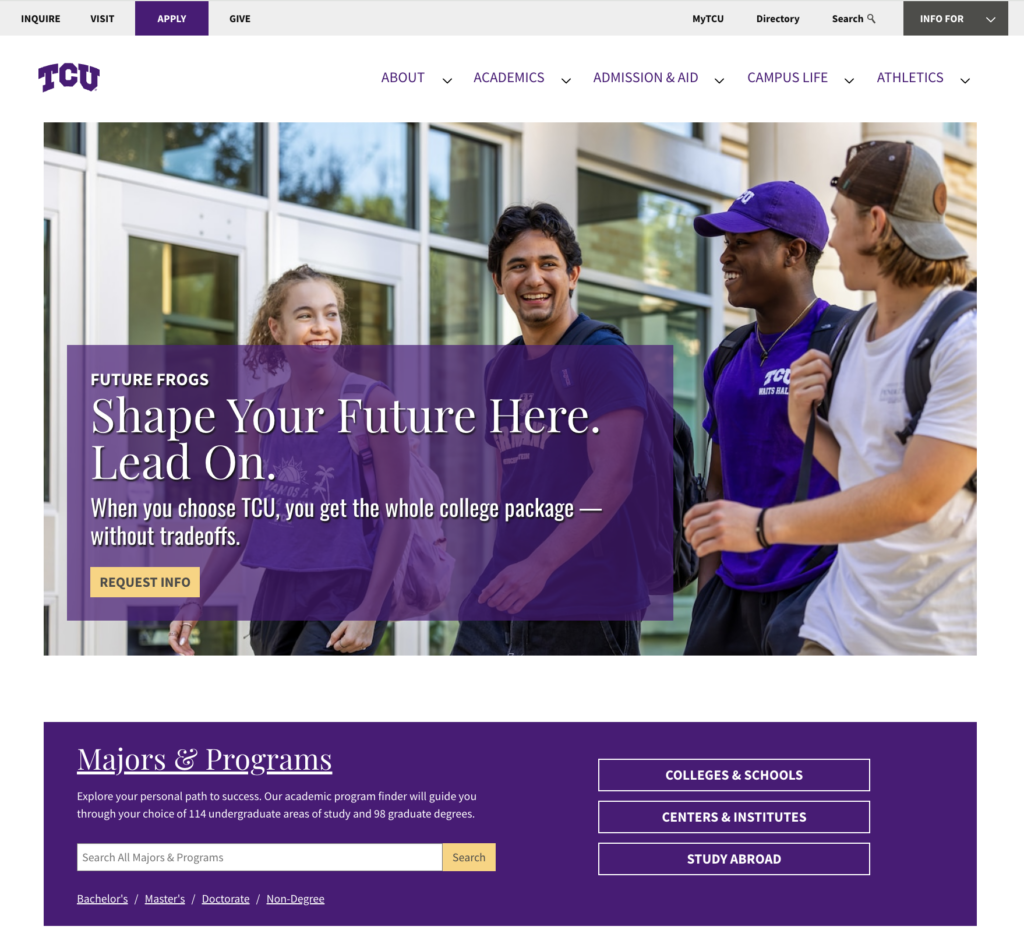February 10, 2025
John Abbasi
|
In loving memory of your website navigation. … Here’s why you should be paying more attention to other methods of content discovery and delivery on your website instead of obsessing over your website nav.
For decades, website navigation has been the backbone of content discovery. Marketers and web designers have meticulously structured menus, submenus and category pages, assuming that visitors will follow a logical path to find what they need. Some marketers even refer to this as the “happy path.” But times have changed.
Today’s website visitors no longer rely on traditional navigation menus as their primary way to explore content. Instead, they gravitate toward onsite search, dynamic homepage elements and AI-driven recommendations to get answers faster. If marketers continue to focus only on optimizing website navigation, they risk ignoring how modern visitors actually engage with content—and losing potential conversions in the process.
So, are we really eulogizing website navigation? No. It’s still important for your navigation to be clean and organized in a functional manner. But it’s even more essential to explore why website navigation has become less effective over time, what’s replacing it and how marketers should adapt.
The Decline of Traditional Website Navigation
Until relatively recently, website navigation has been the de facto way of creating an organized path for website visitors to discover content and key pages. Dropdown menus, sidebars and mega menus have been staples of UX design, guiding visitors through an organization’s content.
However, data shows that visitors are engaging with these elements less and less. Some key factors driving this decline include:
- Mobile-first browsing – On smaller screens, traditional navigation menus shrink into hamburger menus or become buried, making them less accessible. Thrive’s 75+ Mobile Surfing Stats shows us that mobile devices accounted for 58% of global website browsing in 2023 (a number that continues to rise today).
- User impatience – Visitors want instant answers. Clicking through layers of categories feels inefficient compared to simply searching or selecting a recommended article. This is even more prevalent across younger generations; Gen Z in particular prefers to go directly to the search bar as their primary means of content discovery.
- More complex websites – As websites grow, navigation structures become bloated and harder to maintain, making them less effective for visitors who just want quick access to relevant content. For content-rich websites in industries like higher education, healthcare and government, the issue becomes extremely complex as key content is often distributed across multiple domains and microsites.
With these changes, website visitors are shifting toward faster, intent-driven content discovery methods that leave your website nav in the digital dust.
How Website Visitors Actually Find Content Today
Instead of following a rigid navigation structure, people are finding content through search, recommendations and intelligent discovery features. Let’s take a closer look at what’s replacing traditional navigation:
Onsite Website Search
Many visitors now head straight to the onsite search bar to find what they need. In fact, studies show that users who engage with onsite search are more likely to convert than those who don’t. Why? Because search allows them to bypass navigation entirely and jump straight to exactly what they’re looking for.
We’ve become a search-first society in many ways. What’s the first thing you do when you need to find a piece of information? You type your search into Google. If you’re working on a project with the help of ChatGPT, you type your questions into its message bar and it returns what you need.
So when visitors land on your website, why should their first action be any different? Your onsite website search has to be optimized to match the standards of big search engines and AI tools.
AI-Powered Recommendations
Many visitors now head straight to the onsite search bar to find what they need. In fact, studies show that users who engage with onsite search are more likely to convert than those who don’t. Why? Because search allows them to bypass navigation entirely and jump straight to exactly what they’re looking for.
We’ve become a search-first society in many ways. What’s the first thing you do when you need to find a piece of information? You type your search into Google. If you’re working on a project with the help of ChatGPT, you type your questions into its message bar and it returns what you need.
So when visitors land on your website, why should their first action be any different? Your onsite website search has to be optimized to match the standards of big search engines and AI tools.
Homepage Features and Dynamic Elements
Rather than relying on a static navigation menu, many websites are featuring key content directly on their homepage. These elements include:
- Featured articles
- Dynamic carousels
- Personalized content modules
- Suggested next steps
Voice Search and Conversational AI
With the rise of voice search and chatbots, visitors are finding content through natural language interactions rather than by clicking through categories. Conversational AI tools can now answer questions, suggest content, and guide people without ever needing a navigation menu.
There are even AI-powered tools to help your site search solution understand the deeper contextual meaning of people’s searches and ensure your results page surfaces the right content every time.
The Problem with Relying Solely on Navigation
Marketers who focus exclusively on optimizing their website’s navigation risk missing out on how visitors actually engage with content. Here’s why traditional navigation no longer works:
- It assumes a linear user journey – Visitors don’t always follow a predictable path. Some arrive via search, others from a social media link and some from a recommendation engine. Navigation doesn’t accommodate these diverse entry points; you have to be prepared to accommodate a non-linear customer journey.
- It creates unnecessary friction – Complex navigation structures require multiple clicks. In contrast, onsite search and AI-driven recommendations deliver content instantly.
- It’s difficult to maintain – As websites evolve and new content is created, navigation structures become outdated, requiring constant updates and design/developer involvement. Meanwhile, AI-powered and search-centric discovery methods automatically adapt to visitor behavior.
The Shift Toward Search and Dynamic Content Discovery
So, what should marketers focus on instead of just optimizing navigation? Lean into some of the content discovery methods we shared above. Here are the three key strategies that are replacing traditional menus with advice on how to approach implementation:
1. Invest in Onsite Search Optimization
A well-optimized search function is no longer optional—it’s a necessity. Ways to improve onsite search include:
- Implementing AI-powered site search tools to better understand and deliver upon user queries.
- Using filters and facets to refine search results and surface the most relevant content.
- Enhancing search relevance to deliver more accurate results based on visitor behavior data.
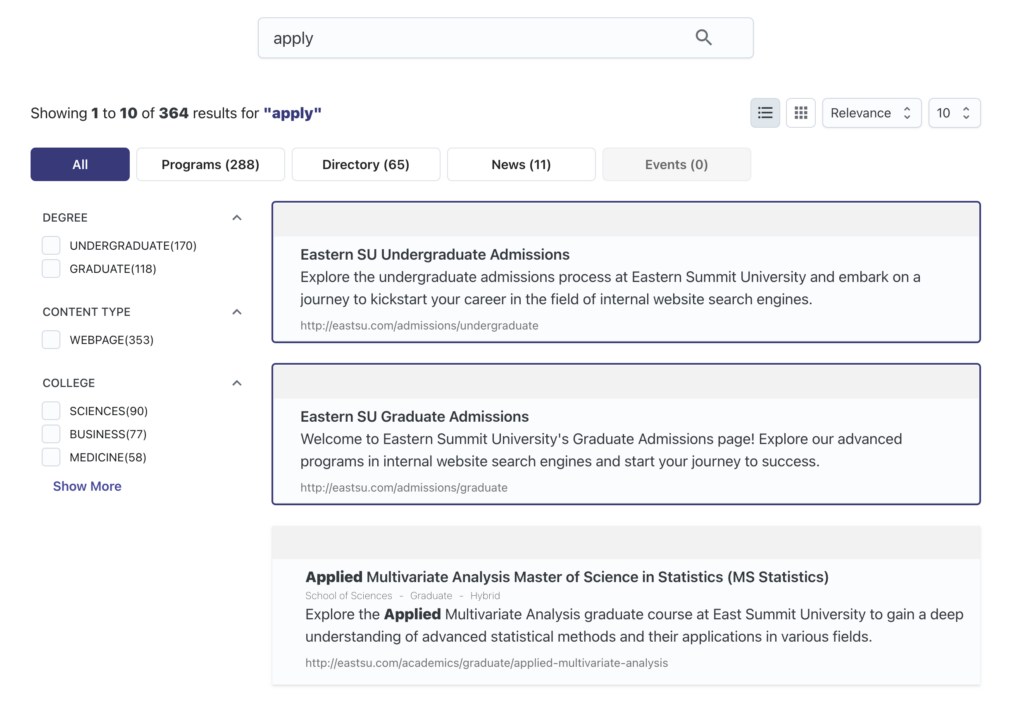
Tips for implementing:
Finding the right platform for your site search is the first step. Website experience owners often fail to recognize the power of onsite search and how it provides easily accessible first-party data that is invaluable for optimizing not only your search results, but your entire website experience.
2. Leverage AI for Personalization
Instead of forcing visitors to browse manually, serve up the right content at the right time. AI-driven recommendation engines can dynamically suggest blog posts, case studies or products based on a visitor’s past behavior and interests.
Tips for implementing:
Barriers for AI implementation often include trust of AI accuracy. That’s why it’s important to test and gradually implement AI. You also have to ensure that the use of AI stays within privacy and regulatory standards for your industry.
3. Enhance Homepage and Landing Page Content Discovery
Make it easier for visitors to find what they need by prioritizing content discovery elements, such as:
- Featured content sections showcasing popular or trending posts.
- Dynamic carousels that adjust based on visitor engagement.
- Contextual CTAs guiding visitors to relevant and high converting pages.
Tips for implementing:
Most important here is to test, test, test. Heatmapping and session recording tools are some of the best ways to see how people are interacting with your content when they land on your site.
If you’re like the majority of organizations, your homepage is your highest visited page. Intentionality around what you feature above the fold and as people scroll is the difference between a high converting website and a stagnant site that misses out on converting high intent traffic.
Let Your Website Navigation Rest in Peace
The era of relying solely on website navigation is over. Visitors no longer want to dig through menus—they want instant, relevant content. The organizations that embrace this shift will create a more intuitive, frictionless experience—and ultimately, drive better engagement and conversions.
Again, your website navigation isn’t really dead per se; it just needs to be clean and available for those who do click around, while you focus on higher impact content discovery levers.
Is your website optimized for modern content discovery? Take a fresh look at your visitor experience and start testing search-first and AI-driven approaches today.

